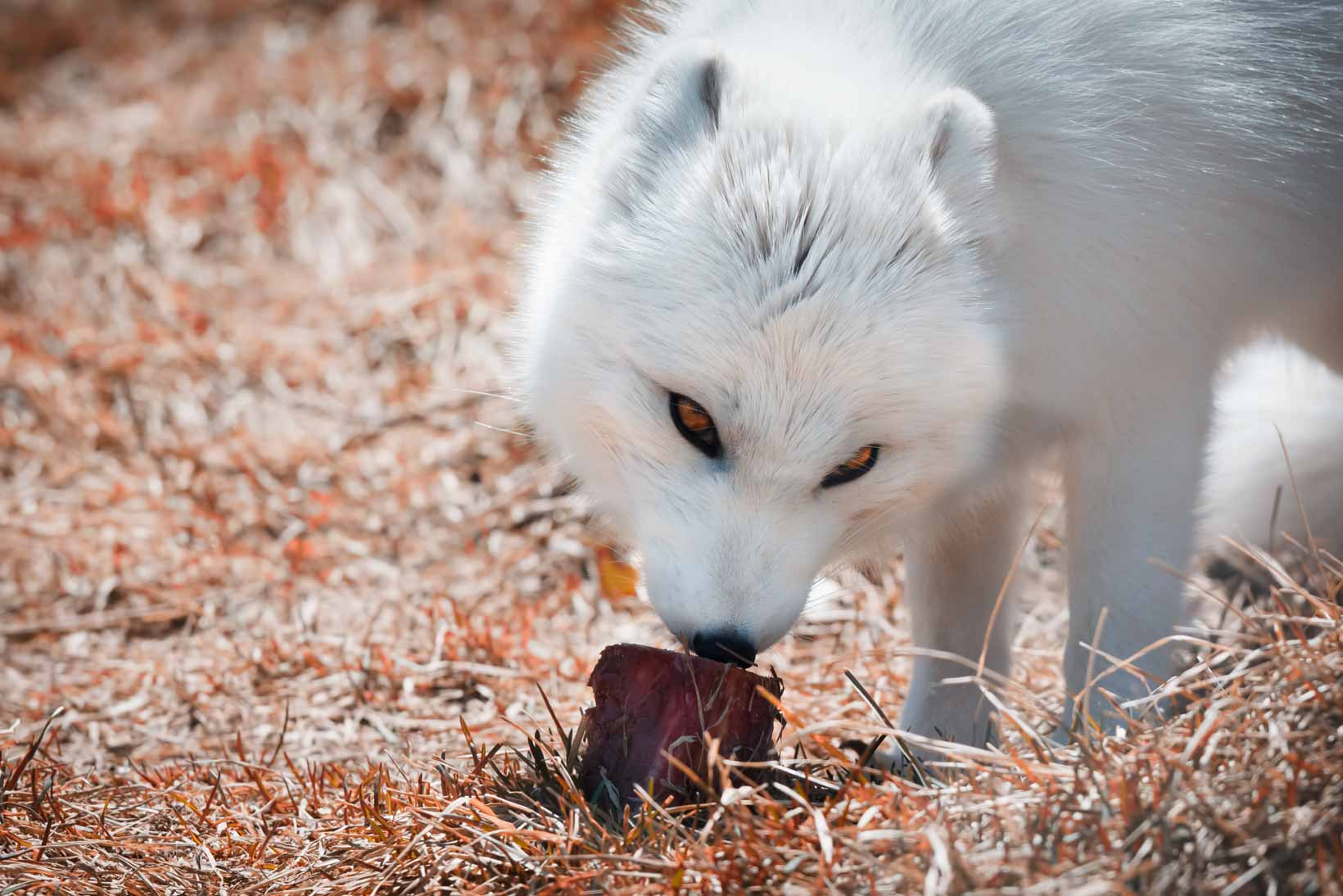Winters in the Arctic are very cold and many polar birds and mammals migrate south to warmer places, returning again in the spring. They use the Arctic peatlands as a source of food and for breeding.
Arctic permafrost and northern peatlands
Permafrost peatlands are widespread in the Arctic. These environments support extensive river networks, plant and animal habitats (including Barnacle Geese), and important cultural landscapes for indigenous peoples that also help maintain their food security and traditional practices.
Over time these environments can act as a carbon sink. Decomposition of dead organic matter is limited by cool and waterlogged conditions and so the carbon is stored in the ground rather than released into the atmosphere. As a result, permafrost peatlands represent a store of carbon equivalent to about 50% of current atmospheric CO2. However, disturbance due to climate change, or direct human activity can lead to permafrost thaw, change in vegetation communities, and wildfires which can switch these regions into being carbon emitters.
Arctic pie
Migrating birds are looking for places where they can find plenty of food, and breed. A combination of factors make good feeding grounds, it is a bit like ingredients for a recipe.
Here’s a recipe for ‘Arctic pie’ – food for breeding birds:
Take melted snow and ice, mix with sediments, pour into coastal waters, leave to create estuaries, deltas, salt-marshes and mud-flats, add crustaceans, molluscs, worms and small fish.
Barnacle geese interactive
Svalbard Barnacle geese are migratory birds shared by the Arctic and the UK.
Every autumn 28,000 birds travel from the High Arctic, to the Solway Firth in Scotland, where they feed all winter on the salt-flats and marshes. Many of them land at the Wetlands and Wildlife Trust reserve at Caerlaverock. In late April they return to their summer breeding grounds on Spitsbergen, the largest island in the Svalbard archipelago.

Describe the geese, in at least thirty words.
- Try to use the following words in your description:
• raucous • flocks • skein • proud • intimidating • numerous • magnificent • squawking • scenic • rounded
Migration
Barnacle geese make the journey from Scotland to Svalbard stopping to feed at Helgeland in Norway, which is approximately half way, 1027km from their starting point. They feed on wetland vegetation before continuing their journey north.

The geese travel north to breed as there is less competition for nesting areas and food, but the weather can be harsh and unpredictable. When the geese reach Svalbard in early May low temperatures and snow cover can delay egg laying. At other times poor grass growth reduces feeding areas, so the geese produce fewer young.
In Scotland, the geese feed on the salt-marshes of the Solway Firth. In the Arctic, the geese feed and breed on rocky outcrops living off the tundra mosses and liverworts. Barnacle geese droppings provide a source of food for reindeer.

The Arctic fox preys on young birds, especially those that injure themselves in their first leap from the cliff nesting sites. Glaucous gulls and skuas take eggs as well as young birds. Climate change and changing sea ice conditions could add the polar bear to the list of predators. Polar bears use ice as a platform from which to hunt seals and fish. If the ice disappears in summer, the polar bear will need to look for alternative sources of food on land.
The geese are found in the Canadian Arctic, Greenland and Russia as well as Svalbard and migrate to North America and other regions of Northern Europe as well as Scotland. They only live in the Northern Hemisphere.
Over the past 60 years, the Caerlaverock reserve run by the Wetlands and Wildlife Trust (WWT) has seen the population of geese increase from less than 300 birds to more than 25,000. The increase is mainly due to a ban on hunting, protected roost sites and the introduction of reserves. Management schemes in 90% of the areas used by the geese for feeding and breeding have helped to increase numbers. The ecology of the geese is well known following a ringing programme by the WWT and the Norwegians who have been involved in ringing over 10,000 individual birds.
Aaju talks about how climate change makes it hard for the birds of the Arctic to find food.
Why are they called Barnacle Geese?
In the past, when the geese returned to Northern Europe every autumn, the local people didn’t understand where they came from, so a legend grew that they must have hatched from barnacles, washed ashore on drift wood.
The name barnacle is thought to have come from the 17th century when the lack of nesting birds prompted the local population to think that the geese flew into the sea in the spring to spend the summer as shellfish. The striped bivalve mollusc, known as the goose barnacle, has a surprisingly similar shape and colour to the body of the geese and a black foot which when submerged, appears like the neck of the bird. Locally they were also known as the ‘Rood Goose’ thought to have come from an old norse word ‘hrota’ which means black geese. There is still a traditional fun fair in Dumfries in the first week of October which goes back hundreds of years and may have originated as a goose fair in Viking times celebrating the arrival of the bounty of the geese.
Listen to Brian Morrell, zoologist and Learning Manager at Caerlaverock Wetland Centre

My name is Brian Morrell and I work as the Learning Manager at the WWT Wetlands centre at Caerlaverock on the Solway Firth.
I am a zoologist and first started working there in 1991 as reserve warden and now have a great job enthusing all of our visitors, both young and old, about the amazing wildlife.
The barnacle geese are very close to my heart, the anticipation of the first birds arriving in late September is terrific. Watching the skies for the skeins of geese and listening for their characteristic yapping call. It is wonderful to see these old friends returning for the winter after a summer spent in the high Arctic, flying huge distances to reach the sanctuary of Caerlaverock. At the end of the second week of October we can have up to two thirds of the entire Svalbard breeding population on the reserve. They roost at night on the mudflats and flight in to feed for the day on the coastal fields and merses (low level ground or river shore). When they take off enmasse it is like the roar of an express train. Scanning the flocks for goslings and rare geese becomes infectious and reading the plastic leg rings an obsession.
The Solway is an ideal wintering site for Arctic breeding geese, especially the maritime barnacle geese which feed on the vast coastal salt-marshes. The mild winter climate is ideal for winter long feeding.
In spring as the days lengthen, the geese start to think of the journey home to Svalbard. Sometimes we actually see the birds rise high into the sky and head off to the north. It is sad to see them go but in a few short months they will be back again.
Running on empty
58,000 from the Greenland breeding population, 33,000 from Svalbard and 3,000 from the feral UK population.
In spring the geese graze eagerly on the new grasses laying down fat reserves for the long journey ahead, to Svalbard. The fat is stored mainly in the rear abdomen. A waddling fat bottomed goose is ready for migration! A female goose lays down more reserves of fat than a male bird as she will be laying and incubating eggs as soon as she arrives in Spitsbergen.
| GPS tracking for one goose | Projection to zero fuel | |
| Trip time (hrs) | 622 | 673.5 |
| Flight time (hrs) | 45 | 96.5 |
| Ground time (hrs) | 577 | 577 |
| Ground distance (km) | 2481 | 6566 |
| Air distance (km) | 2746 | 6830 |
| Feeding time (hrs) | 549 | 549 |
Why do the geese make this journey? What effect does it have on them?
Barnacle geese are not the only geese to migrate long distances. Snow geese also migrate in America. Watch the start of their migration from Hudson Bay.